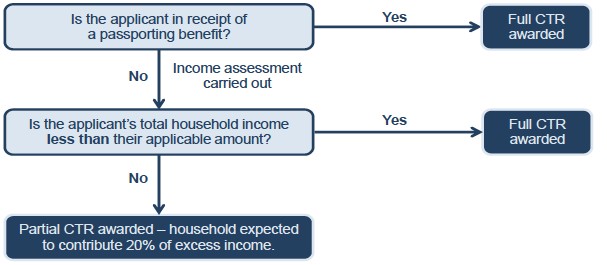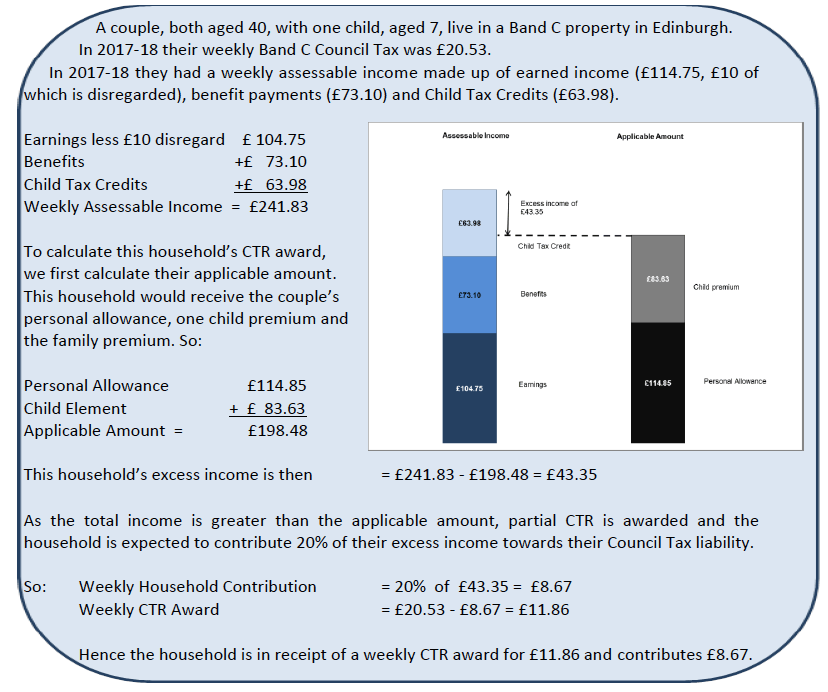Council Tax Reduction in Scotland 2017-2018
This publication provides statistics on the Council Tax Reduction (CTR) scheme, which reduces the Council Tax liability of low income households in Scotland.
This document is part of a collection
1. Introduction
The Council Tax Reduction ( CTR) scheme provides low income households with a reduction in their Council Tax liability. The reduction can be any proportion of the liability, up to and including 100 per cent (i.e. the household has their Council Tax liability reduced to £0).
CTR data is reported quarterly. This publication provides the most recent quarterly data for the number of CTR claimants and the weekly income foregone as well as providing more detailed analysis of additional characteristics and weekly awards for the March 2018 CTR data.
The Scottish Government introduced CTR on 1 st April 2013 to replace Council Tax Benefit ( CTB). CTB was implemented by the Department for Work and Pensions ( DWP) and was abolished under the provisions of the UK Welfare Reform Act 2012. Until 1 st April 2017 entitlement to CTR in Scotland replicated, as far as possible, previous entitlement to CTB.
Wider changes occurred to Council Tax in Scotland in 2017. Council Tax was frozen between 2008-09 and 2016-17 in line with an agreement reached between the Scottish Government and COSLA. At the end of this period the 2017-18 Local Government Finance settlement included an agreement between the Scottish Government and local government for locally determined Council Tax increases to be capped at 3 per cent. Furthermore, the scheme increased the child element in the Applicable Amount by 25 per cent to £83.63. In addition, the multipliers for dwellings in Council Tax bands E to H were changed. These multipliers are applied to the Band D Council Tax rate to produce the Council Tax rates for dwellings in Band E-H. Also a new relief was established for low to middle-income households in properties affected by these changes.
1.1 How CTR awards are calculated
Entitlement to CTR and the amount awarded is based on the status and income of the applicant and their household. Figure 1 shows the process an application goes through to calculate whether CTR should be awarded and, if so, how much.
Figure 1: Process for calculating CTR awards a

a This is a simplified version, not accounting for capital rules, non-dependant deductions and second adult rebate.
Figure 2: Illustration of CTR Income Assessment 2017-18

Contact
There is a problem
Thanks for your feedback